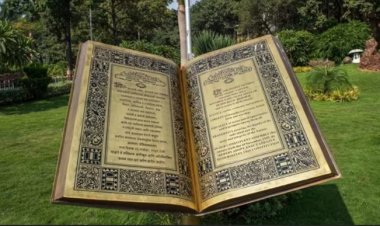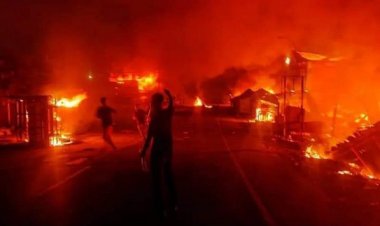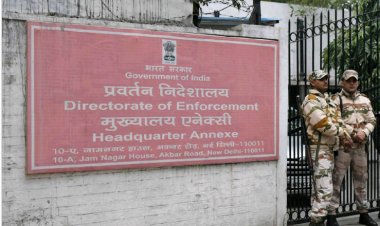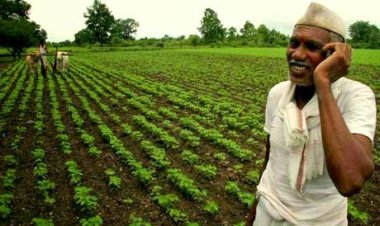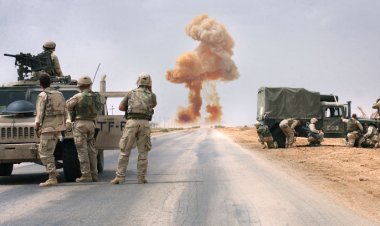Meiteis Have Not Been 'Denied' ST Status. Exclusion Was Their Own Choice
The Wire
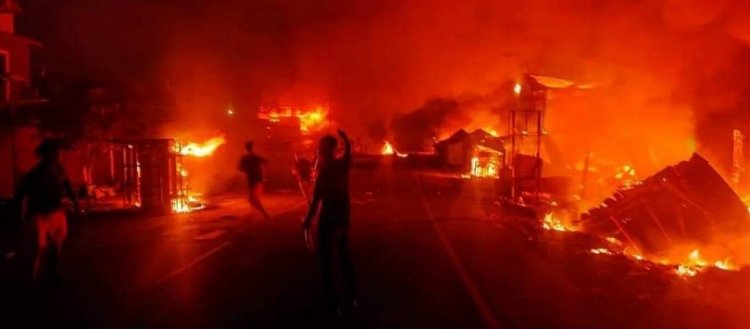
The ongoing ethnic riots in Manipur escalated on May 3, 2023 – the same day as the tribal ‘Solidarity March’ was organised in all district headquarters in the hill areas against the Manipur high court’s order directing the state government to submit a recommendation to the Union Ministry of Tribal Affairs on the question of including Meiteis in the Scheduled Tribes (ST) list.
The scale of violence selectively unleashed on the Kuki-Zomi tribes suggests the riots may have been pre-planned. The march was organised by the All Tribal Students’ Union, Manipur (ATSUM) which includes the Nagas as well – but the targets have only been people from Kuki-Zomi tribes.
One also suspects that the only reason behind the violence might not be the opposition to the ST status for Meiteis. It may be one of the factors, but not the main factor, as the issue of land has also been emphasized by the Meitei.
The Meitei claimed that they were left out of the President’s Constitution (STs) Order, 1950. But the question is about the modification list in 1956 which was done based on the report of the Backward Classes Commission (BCC) chaired by KaKa Kalelkar.
The Meitei were not denied or left out from the STs List as they claim – they chose not to be included. When the first BCC requested a list of tribes to be included in the Scheduled Tribes (modification) list from each state and union territory, Meities did not include themselves.
At the same time, they cannot pretend that they were not aware of this – as certain sections of the Meitei were enlisted as Scheduled Castes (SCs) on the commission’s recommendation.
Now, after more than six decades they demand to be considered as backward and seek to be at the same level as the people whom they contemptuously called ‘Hao’ (tribal). The abusive words Hao thu, which they used quite often in the recent riots against the Kuki-Zomi tribes highlight a deep-rooted dichotomy between the Meitei and the tribals. This term is also used for all the hill tribes, including Nagas. And the Meitei, who consider it highly derogatory, hurl it at the tribals.
Regarding the inclusion of tribes in the ST list, it is basically a policy for promoting social justice by adopting positive discrimination and affirmative action for the unrepresented within the society.
Then, why is it that the dominant community of a state like the Meitei in Manipur demands ST status? Is it for reservation benefits, which sections of the community already avail as Other Backward Classes (OBC), economically weaker sections (EWS) and Scheduled Castes? It is not, as Meitei MLA Nishikant Sapam said “the job is another thing the main thing is land” in his interview with Karan Thapar for The Wire. The hill tribes are protesting against the Meitei demand for ST status as they are apprehensive of an ulterior motive. The issue became more complicated when the Manipur high court ordered the Manipur government to consider the Meitei community’s inclusion in the ST list.
The Chief Justice of India (CJI) D.Y. Chandrachud called the high court’s direction as “completely factually wrong,” as the procedure for inclusion in the ST list is very clear in the constitution.
Even though the constitution does not provide any criteria for the inclusion of a community or a tribe in the ST list, Article 365(25) states, “Scheduled tribes means such tribes or tribal communities or parts of or groups within such tribes or tribal communities as are deemed under Article 342 to be Scheduled Tribes for the purposes of this Constitution.”
Article 342 of the constitution empowers the president to specify any tribe as ST by public notification in any state or union territory, in consultation with the governor.
The first BCC adopted a single criterion for scheduled castes i.e., untouchability. It also stated the criteria for a tribe or group to be identified as ST as those who “live apart in the hills, and even where they live in plains, they lead a separate excluded existence and are not fully assimilated in the main body of the people. Scheduled tribes may belong to any religion. They are listed as scheduled tribes because of the kind of life led by them.”
In fact, the Meiteis’ exclusion from the ST list is by their own choice, as the Kalelkar commission left it entirely up to the state. The method the BCC adopted was the distribution of a questionnaire to all the states and union territories. It even included such questions like: “Do you think that the lists of SCs and STs issued under the president’s order need any revisions? If so, what castes or communities do you suggest for inclusion or exclusion from the above mentioned two lists (SCs & STs list)? Please state reasons…Have your state government recommended the inclusion in or exclusion from the existing lists of any tribe, caste, or community?”.
These two questions, besides many others, show that the Meitei did not consider being at the same level as the hill tribes, the untouchables, and those who follow their traditional religion, the Sanamahi. Of course, by using ‘untouchability’ as a criterion, certain sections of the Meitei community were included in the SC list, as they were untouchable in relation to the dwija (twice-born) Meitei.
Demanding ST status for the dwija is not in alignment with the criteria mentioned above, if the demand is for those who “reconvert” to Sanamahi, it should be for an extension of the SC status towards their community. The followers of this faith were condemned as mangba (unclean), and they were included in the SC list.
In such sensitive matters, any judicial intervention is setting precedent for future litigation. So it is imperative to avoid taking an undignified stance that could put the judiciary’s credibility at stake.
Lam Khan Piang teaches sociology at the University of Hyderabad
thewire.in /caste/meitei-st-status-exclusion-choice
Disclaimer: This page expresses the views of the author. We publish it on this site for discussion
– Senthalam news section








